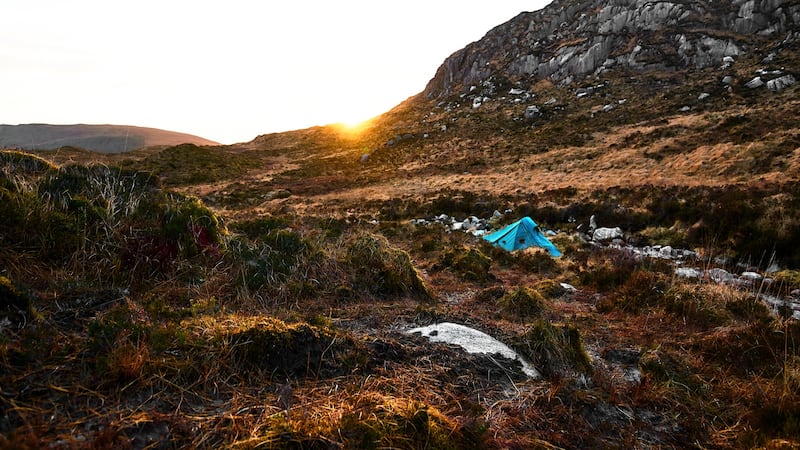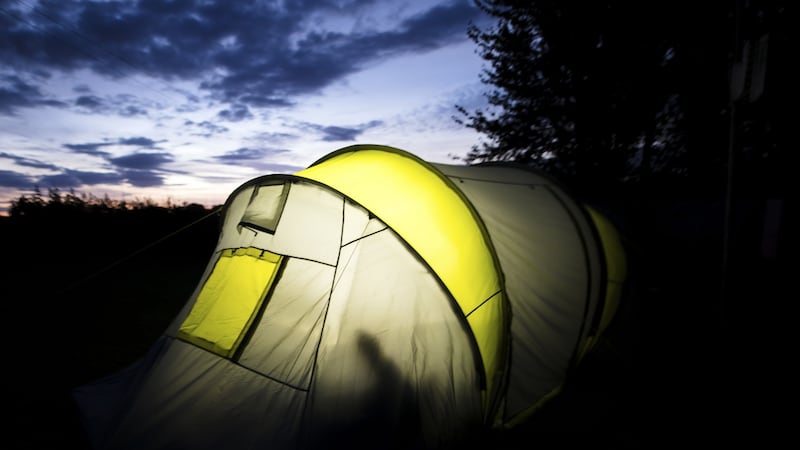With the ending of lockdown, and the easing of restrictions, the idea of venturing into the world again is enough to make most of us giddy. A walk along a windswept beach feels so tantalising you can almost taste that salty air on your lips. The idea of exploring our gorgeous little country – with its rolling countryside, steaming bowls of seafood chowder, frigid sea swims and endless cups of tea in front of a roaring fire – couldn’t be more appealing.

However, if like me, you spent a touch too long imagining the perfect break instead of actually booking it, your elation may be short-lived. Most of those quaint Airbnbs appear to be fully booked until the end of September, as are many of the more traditional self-catering offerings, hotels and guesthouses. Even campsites have limited availability due to new rules regarding the number of pitches they can provide.
But 2020 does not have to be a total write-off. Many of us are in possession of all of the necessary equipment to survive – and enjoy – a night in the wild. While your camping gear may have been bought with music festivals in mind, once it is in working order, there is no reason you can’t haul it out, dust it off and head off the beaten track instead. You might be surprised how much you enjoy a few nights of wild camping far away from civilization with only the sounds of the great outdoors to lull you to sleep.
Where can I pitch my tent?
Wild camping involves pitching your tent - you’ve guessed it - in the wild, away from designated campsites and holiday parks. It is all about enjoying the solitude Ireland’s countryside has to offer. Panoramic views, close to a water source and far away from civilisation are just of the few things to look out for when choosing the perfect spot to pitch your tent. It’s also a good idea to choose a flat pitch that isn’t too exposed to the elements (we know it’s summer, but it is still Ireland).
Avoid fields with livestock in them, for your sake and theirs. If you are in doubt about where you are pitching your tent, find a local and ask them if they know who owns the land. While I usually live by the strategy of asking for forgiveness rather than permission, I don’t when it comes to camping on private land. The last thing you want is an irate land owner banging on the side of your tent in the wee hours of the morning.
But don’t let that put you off, as there are a lot of landowners who are more than happy to let you pitch your tent on their land for a night or two as long as you ask for permission. There are also a number of designated wild camping spots across the country which are a little more straightforward.

1. Coillte land
Coillte has designated a number of grassy pitches that are close to national waymarked trails which are intended for single night stays. There is usually space for one or two pitches and they are close to a stream or water source. These spots include the Slieve Bloom mountains, the Glenbeigh/Iveragh peninsula, Knockmealdowns/Lismore and North Mayo.
See www.coillte.ie/activity/camping/
2. National Parks
Ireland is home to six national parks, all of which offer views more stunning than the next. Those wishing to camp can opt to stay in Ballycroy in Co Mayo, Connemara National Park or Wicklow National Park. It is worth noting that the rules do vary from park to park. Ballycroy and Connemara for example do not require permits unless you are looking to camp with a group of more than 10 or light a fire. Wicklow Mountains National Park has similar rules but campfires are strictly forbidden, as is camping in the Glendalough Valley. You must walk a minimum of three hours from Glendalough Valley to adhere to the camping guidelines set out by the Wicklow Mountains National Park and the principles of Leave No Trace.
See wildnephinnationalpark.ie/camping/; connemaranationalpark.ie/visit-us/recreation/; wicklowmountainsnationalpark.ie/getting-here/accommodation/
3. River Barrow
A towpath runs alongside the River Barrow from Lowtown in Co Kildare to St Mullins in Co Carlow. This area is already popular with walkers and paddlers and is now starting to gain more popularity as a wild camping spot thanks to the loughs which provide the perfect setting to pitch a tent. The old quarry at Clashganny has recently been converted to a wild camping spot by members of the local community. Kilkenny based company Go with the Flow offers multi-day canoeing and camping trips and will equip you with everything you need from a tent to a canoe.
See gowiththeflow.ie, riverbarrow.net
4. River Foyle
This is another one for the water-lovers. There is a glorious two-day paddle from Strabane to Derry city that I would highly recommend to anyone looking to unwind and escape from it all. Gribben Quay, which was once home to a mid 19th-century salmon processing building, makes a perfect overnight stop at the midway point of the paddle. It has a pier, shelter and a nice piece of grass overlooking the water to pitch your tent. There is also wild camping available at Moville.
See canoeni.com/canoe-trails/foyle/camping-facilities/
5. Adirondack Shelters
Adirondack shelters are very basic shelters that have been built by volunteers on Coillte land. Found in very remote areas, their main aim is to provide a place for long distance hikers to lay their heads. The shelters sleep up to five people on a sleeping platform so a space is not guaranteed.
Brushers Gap is probably the most popular shelter. Located on the Wicklow Way it is about a 90-minute walk from civilisation just north of Glendalough. It comes equipped with a fire pit, water source and a picnic table. There are two similar huts on the Wicklow Way at Mucklagh and Mullacor.
My personal favourite is located on the Bangor Trail in Co Mayo which is Ireland's wildest hiking route and offers some of the best star gazing the country has to offer. The site has a picnic table and water butt but fires are strictly prohibited. The hut is located a two-hour hike from Letterkeen.
Further into the Nephin wilderness lies the Altnabrocky shelter which is a five-hour hike from Lough Avoher on the Western Way. There is a stream nearby for water and an outdoor compost toilet. This hut is on flat ground so does offer some room for tents too.
See mountainmeitheal.ie/about-us/adirondack-shelter/
What do I need to know before I head off?

1. Good kit is essential
Wild camping is all about packing relatively light while not scrimping on the essentials. At the very minimum you will need a tent or bivvy bag, sleeping bag and mat, head torch, first aid kit, warm and waterproof layers, a camping stove, food, water and toilet provisions.
2. Speaking of toilet provisions . . .
Catholes for disposal of human waste must be located at least 30m away from watercourses and 50m from walking routes. The waste must be buried and all toilet paper and hygiene products must be carried home with you.
3. Practice makes perfect
It is a good idea to have a dry run at home before you set off. Put up your tent and test your camping stove to make sure it's working. It is much easier to iron out any problems with your kit from the comfort of your home than it is out in the wilderness.
4. Choose your spot wisely
You will want a large flat area to pitch your tent. It is also a good idea to choose a spot that isn't too exposed to the elements. If you are camping near the coast, beware of any incoming tides as waking up to the sound of waves lapping against your canvas might sound relaxing but I can assure you it's anything but.
5. Leave no trace
Take nothing but memories and leave nothing but footprints. It is imperative that you leave the environment exactly as you found it or even better. Be sure to read up on the Leave no Trace principles before you head off at leavenotraceireland.org.
The Wild Camping Code
- Campsites must be at least 400m from a road capable of carrying a vehicle.
- Campsites must be at least 400m from a building.
- Tents must be moved after every second night to allow vegetation to recover.
- Campers must remove all food waste and litter, whether or not it is biodegradable. Buried waste is often exposed by foraging animals or by erosion.
- Soap and toothpaste must be kept at least 30m away from watercourses.
- Dish and utensil washing must be conducted at least 30 metres from water bodies. All waste water should be strained and scattered. In no circumstances should waste water used in washing be poured into lakes, streams or rivers.
- Campers are required to conduct themselves in a quiet manner in an effort to avoid disturbing the local community, wildlife or other visitors.
- Campsites must be kept visually unobtrusive.
- Campsites must be left as found, or better.











